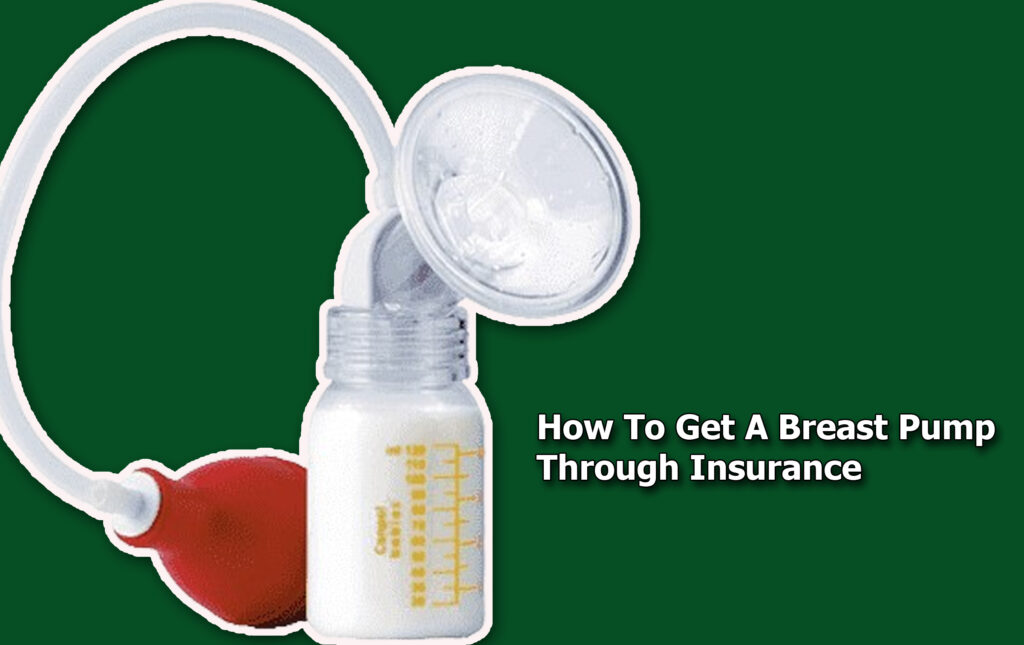How To Get A Breast Pump Through Insurance – Breastfeeding is one of the most beneficial ways to provide essential nutrients to a newborn.

However, many mothers may need a breast pump to maintain their milk supply. This happens especially if they plan to return to work, have a premature baby, or experience breastfeeding challenges.
Fortunately, many health insurance plans cover the cost of breast pumps, making them more accessible and affordable for new mothers.
Moreover, understanding how to obtain a breast pump through insurance can be confusing. This involves navigating policy details, provider options, and paperwork requirements.
Knowing the steps involved, from checking coverage to selecting the right pump, can help make the process smooth and stress-free.
Understanding Insurance Coverage For Breast Pumps
Before you apply for a breast pump through insurance, it’s important to understand how coverage works.
What’s more, insurance providers follow different policies based on the Affordable Care Act (ACA) and other regulations that determine eligibility, type of pump, and the process for obtaining one.
Here are some terms you’ll need to confirm:
- Types of Coverage: Some insurance plans cover only manual pumps, while others provide electric pumps. Hospital-grade pumps may also be covered in specific cases, such as for mothers with premature babies.
- Prescription Requirements: Many insurance providers require a prescription from a healthcare provider before approving a breast pump.
- Timing of Coverage: Some plans allow you to order a pump before delivery, while others require you to wait until after the baby is born.
- Approved Suppliers: Insurance companies typically have a list of approved medical suppliers from which you must obtain the breast pump.
Steps to Get a Breast Pump Through Insurance
Navigating the insurance process for obtaining a breast pump involves several key steps. Being prepared and understanding each step can help ensure a hassle-free experience.
Check Your Insurance Plan
The first step is to check your insurance policy to understand the specific breast pump coverage details. You can:
- Call your insurance provider or check their website for information on breast pump benefits.
- Ask about the types of pumps covered, whether you need a prescription, and when you can order the pump.
- Confirm if you have to go through a specific supplier or if you can purchase the pump directly and get reimbursed.
Get A Prescription From Your Doctor
Most insurance companies require a prescription from a healthcare provider before they even approve the breast pump. You’ll need to:
- Schedule an appointment with your obstetrician, midwife, or primary care provider.
- Request a prescription that includes your name, expected due date or delivery date, and the type of breast pump recommended.
- Ensure that the prescription aligns with your insurance provider’s requirements.
Choose An Approved Breast Pump Supplier
Insurance providers often have a list of approved Durable Medical Equipment (DME) suppliers from which you must obtain your pump.
- Review the list of suppliers and choose one that meets your needs.
- Visit the supplier’s website or contact them to check the available breast pump models.
- Provide your insurance details and prescription to the supplier for verification.
Select Your Breast Pump
Once your eligibility is confirmed, you must choose a breast pump that suits your lifestyle and breastfeeding needs. Here are the things you need to do:
- Decide between a manual or electric pump based on your usage frequency.
- Check if there are any upgrade options available for an additional cost.
- Ensure that the pump you select is covered under your insurance plan.
Place Your Order And Receive The Pump
After you choose your pump, you will need to place an order through the approved supplier.
- Submit any required paperwork, including your prescription and insurance details.
- Confirm shipping times and delivery methods.
- Once received, check the contents to ensure all parts are included and functioning correctly.
Additional Considerations When Getting A Breast Pump Through Insurance
While insurance coverage makes breast pumps more accessible, there are a few additional factors to consider when you want to get the best option for your needs. Those additional considerations include:
- Upgrade Options: Some insurance plans offer a standard pump for free but allow upgrades to a higher-end model for an extra charge.
- Rental vs. Purchase: Some policies only cover rental hospital-grade pumps, while others allow you to keep the pump permanently.
- Replacement Parts and Accessories: Check if your insurance covers extra accessories like bottles, flanges, or storage bags.
- Customer Support: Choose a supplier that offers good customer service in case you need assistance with your pump.
Frequently Asked Questions
When Should I Order My Breast Pump Through Insurance?
It actually depends on your insurance plan. Some allow you to order during pregnancy, while others require you to wait until after birth. Hence, you can contact your insurer to confirm timing requirements.
Can I Choose Any Breast Pump I Want?
Insurance plans usually cover specific models. However, some suppliers offer upgrade options where you pay the difference for a higher-end model.
Do I Need A Prescription To Get A Breast Pump Through Insurance?
Yes, most insurance providers require a prescription from a doctor or midwife before they approve a breast pump.



